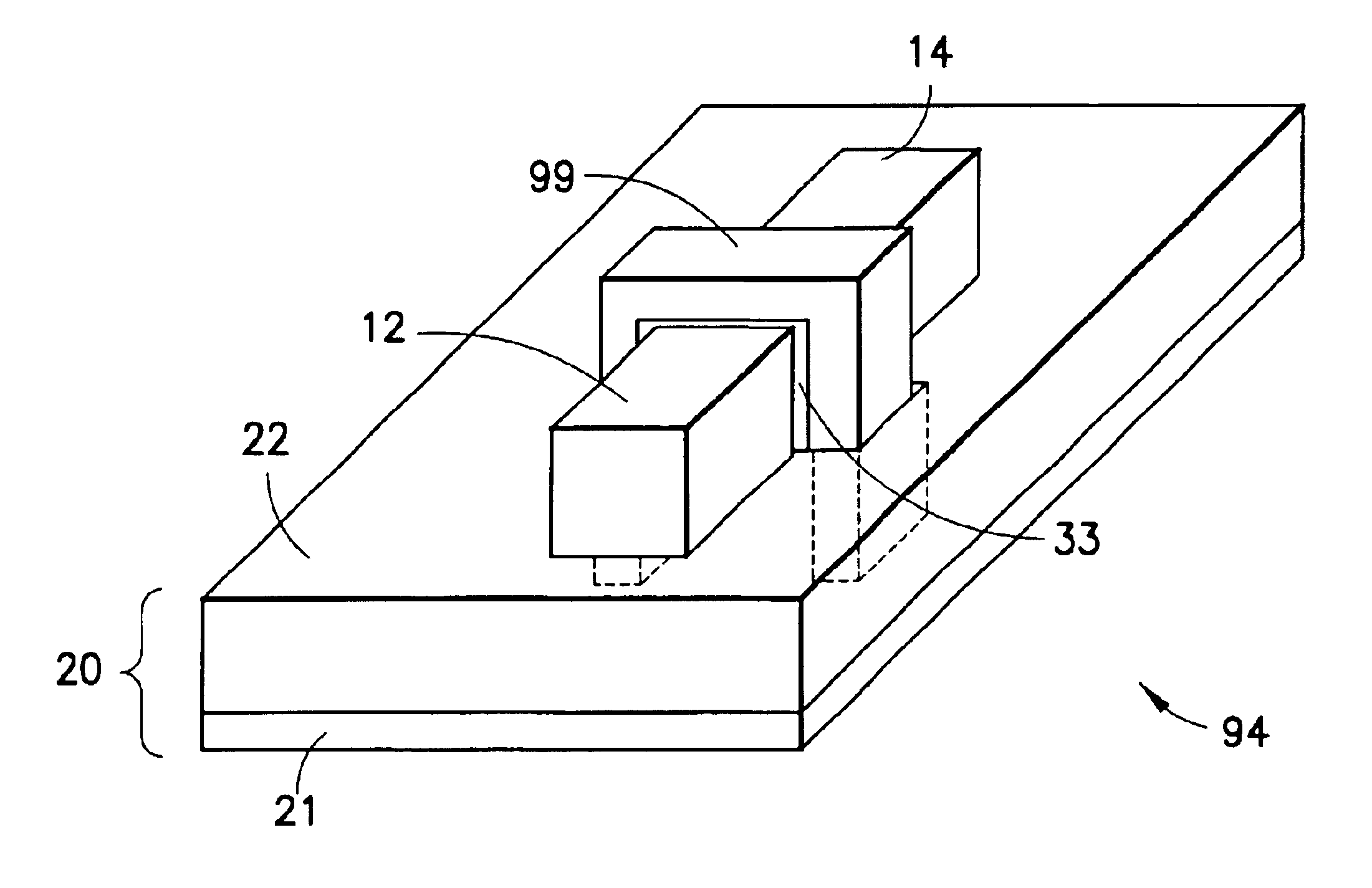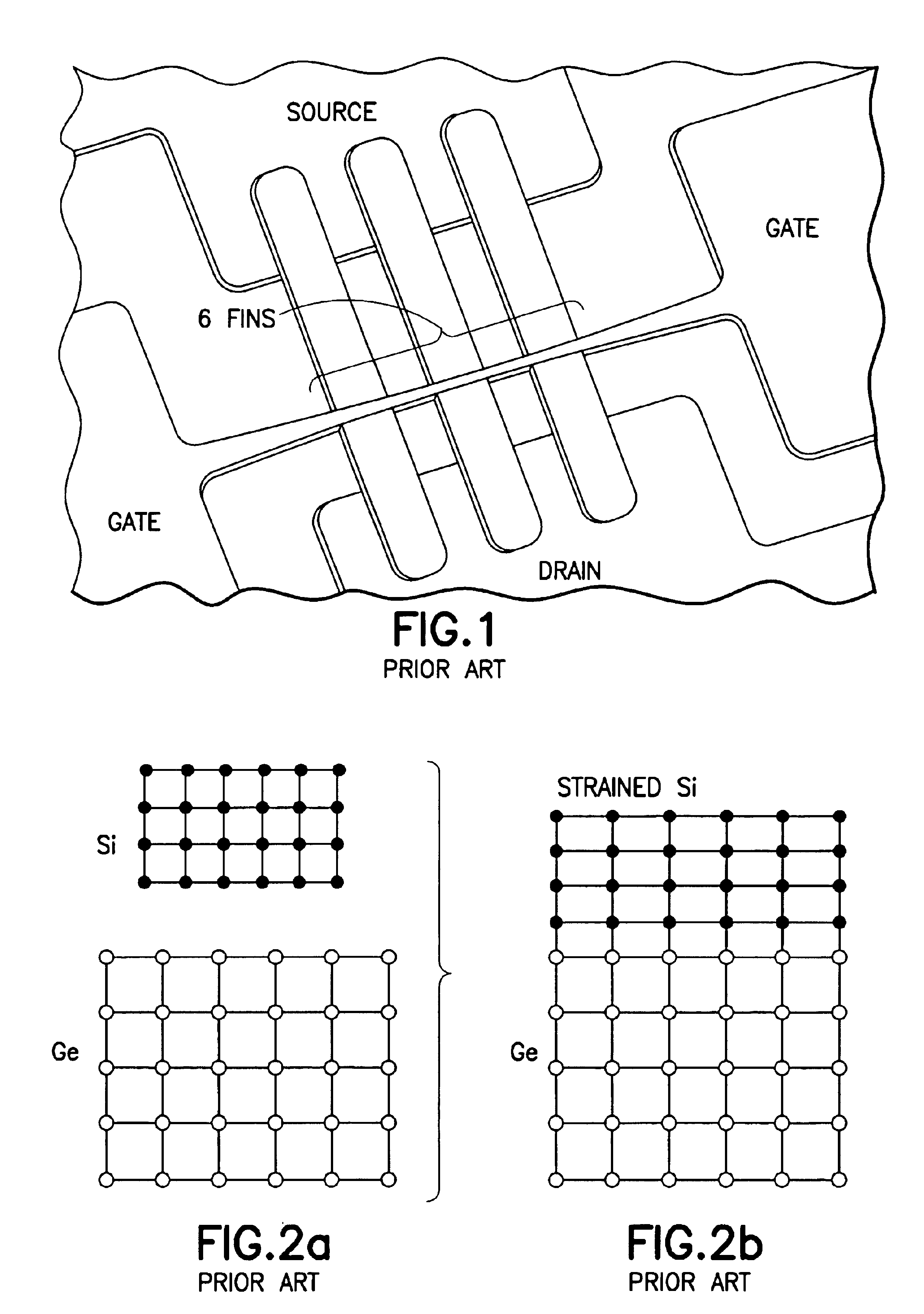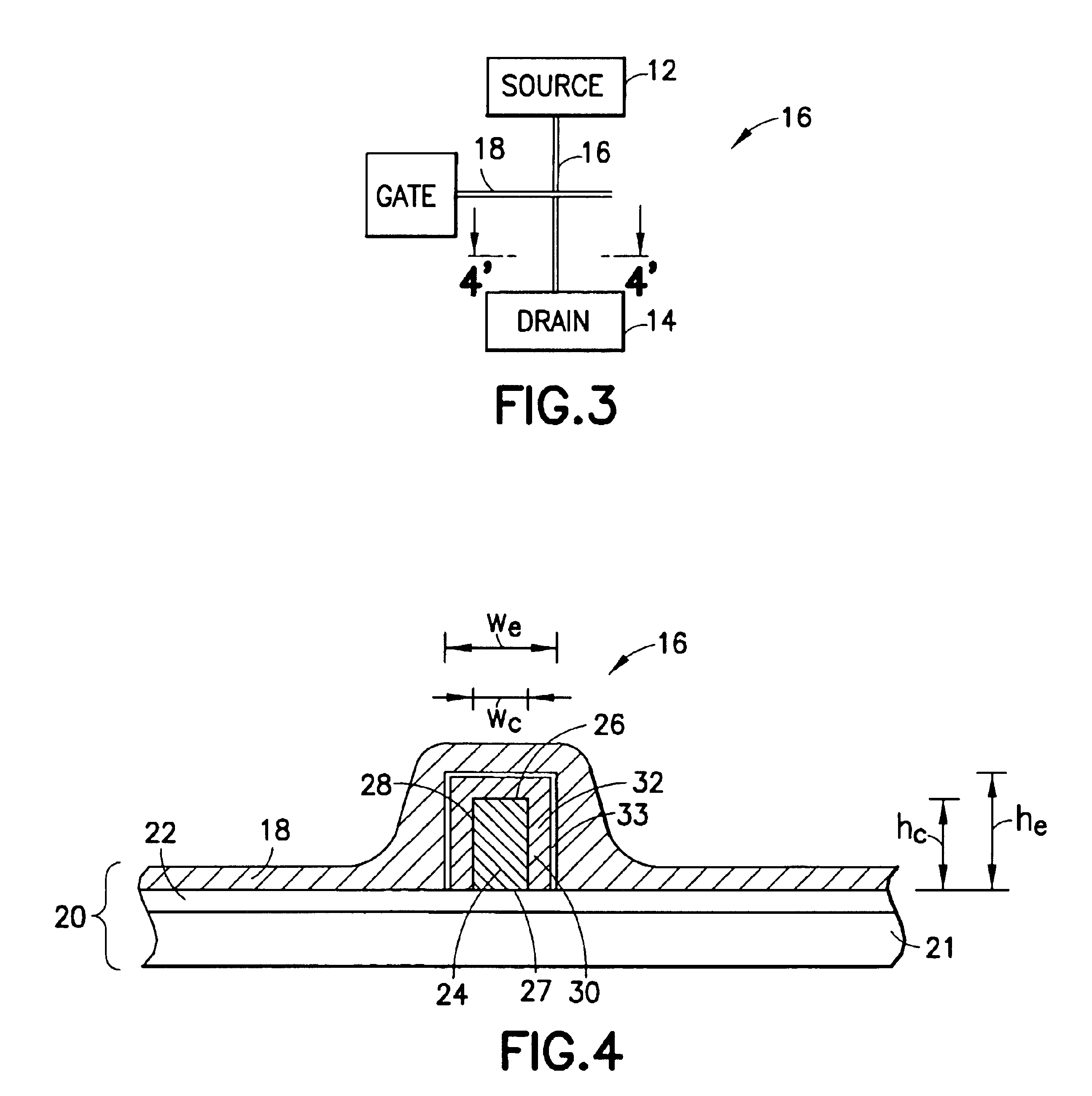FET channel having a strained lattice structure along multiple surfaces
a lattice structure and fet technology, applied in the field of layered structure, can solve the problems of limiting the further scaling of fets, requiring greater control, and current leakage continuing to be a limiting factor
- Summary
- Abstract
- Description
- Claims
- Application Information
AI Technical Summary
Benefits of technology
Problems solved by technology
Method used
Image
Examples
Embodiment Construction
[0010]The foregoing and other problems are overcome, and other advantages are realized, in accordance with the presently preferred embodiments of these teachings. The present invention concerns a channel for electrically connecting a source and a drain of a field effect transistor (FET), commonly called a fin for a FinFET. The channel includes a channel core and a channel envelope. The channel core is coupled to a substrate such as a SIMOX wafer (a wafer with an upper region separated by implanted oxygen) or bonded wafer. The channel core defines a top surface that is spaced from the substrate, and opposed sidewall surfaces between the substrate and the top surface. The channel core is formed from a first semiconductor material defining a first lattice structure.
[0011]The channel envelope is in contact with the opposed sidewall surfaces and the top surface of the channel core. The channel envelope is formed from a second semiconductor material defining a second lattice structure tha...
PUM
 Login to View More
Login to View More Abstract
Description
Claims
Application Information
 Login to View More
Login to View More - R&D
- Intellectual Property
- Life Sciences
- Materials
- Tech Scout
- Unparalleled Data Quality
- Higher Quality Content
- 60% Fewer Hallucinations
Browse by: Latest US Patents, China's latest patents, Technical Efficacy Thesaurus, Application Domain, Technology Topic, Popular Technical Reports.
© 2025 PatSnap. All rights reserved.Legal|Privacy policy|Modern Slavery Act Transparency Statement|Sitemap|About US| Contact US: help@patsnap.com



